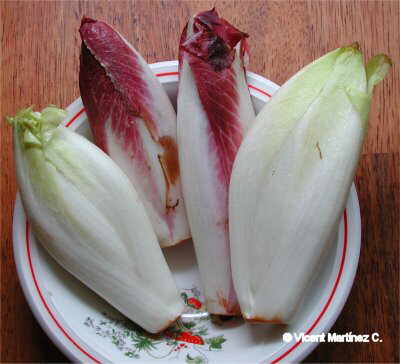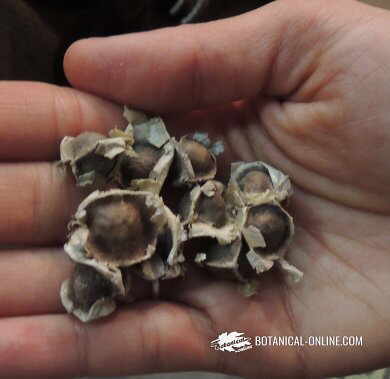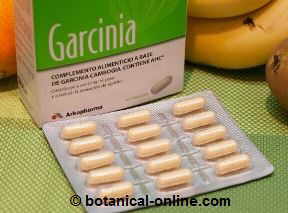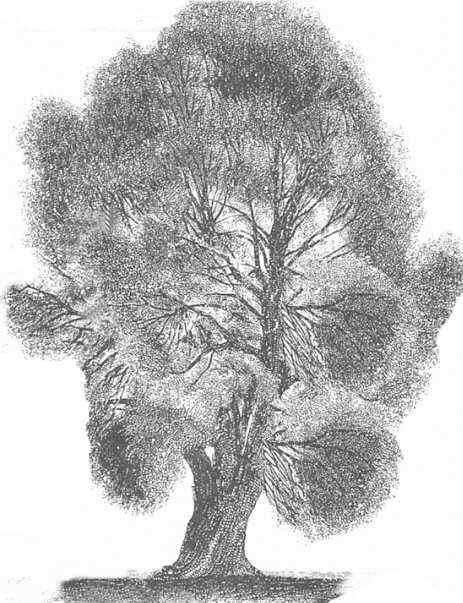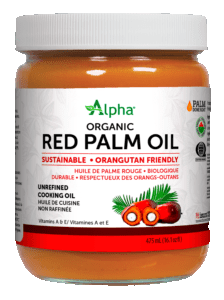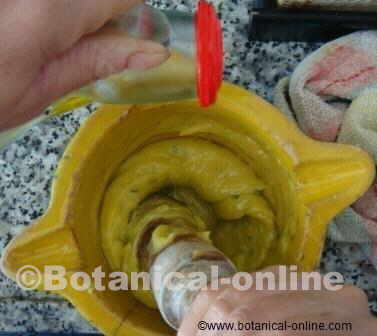Contents
- 1 BENEFITS OF CALENDULA (Calendula officinalis)
- 1.1 What is calendula?
- 1.2 What is Calendula officinalis like?
- 1.3 INTERNAL PREPARATIONS WITH CALENDULA FLOWERS.
- 1.4 Anti-inflammatory properties of calendula
- 1.5 Calendula regulates menstrual cycle
- 1.6 Digestive properties of calendula
- 1.7 Antibiotic properties of pot marigold
- 1.8 EXTERNAL PREPARATIONS WITH CALENDULA LEAVES
- 1.9 Calendula officinalis, a very good vulnerary
- 1.10 Other curative properties of calendula
- 1.11 Calendula dosage
BENEFITS OF CALENDULA (Calendula officinalis)
What is calendula?
Calendula, pot marigold, or garden marigold (Calendula officinalis) is a plant of the Compositae family native to the Mediterranean region, Egypt and Southern Europe.
It is speculated that the plant is the result of natural hybridization between other types of marigolds, wild marigold probably (Calendula arvensis).
What is Calendula officinalis like?
This plant is distinguished by its large and beautiful flower heads, brightly colored orange, that bloom almost all year round, even in winter if temperatures are not too low.
The medicinal part of the plant are the flowers, and sometimes the crushed leaves are also used in external applications. Because you can find it almost all year, it is more practical and more preferable to use fresh plant as medicinal components are partly lost during drying.
Calendula is used as a vulnerary, emmenagogue and analgesic remedy. It has properties to reduce inflammation, disinfect and improve the healing time of wounds.
For its wealth of flavonoids, the plant improves circulation and is able to regulate the cycles of women, reducing heavy menstrual periods and favoring those that are scarce.
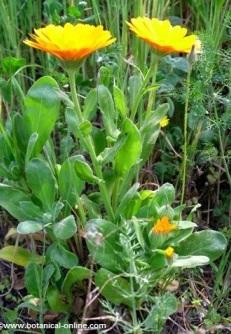
Photo of pot marigold plant (Calendula officinalis)
INTERNAL PREPARATIONS WITH CALENDULA FLOWERS.
Anti-inflammatory properties of calendula
Marigold flower heads are rich in calendulosides and Calenduline, bitter principles with antiphlogistic properties, that is to say, able to reduce inflammation.
Traditionally, calendula is used to treat inflammation of the mouth or throat, and mouth sores, gingivitis and pharyngitis, and can be a helper in the treatment of tonsillitis and ulcers of the stomach and duodenum.
The plant also contains other anti-inflammatory and antiseptic principles, which help fight infections, such as salicylic acid, terpenoids (alpha and beta amyrin) gentisic and malic acids, caryophyllene and quercetin.
To relieve mouth sores, gingivitis and gum disease, take mouthwashes and gargles with the flowers infusion. Mucilages adhering to the oropharyngeal mucosa tissue ease and soften the inflamed tissue.
Drinking calendula teas may be suitable for pharyngitis processes and for stomach ulcer. (Take 2g. Dried flowers in 200ml. Of water, up to 3 times a day).
Calendula regulates menstrual cycle
Pot marigold has properties on female reproductive apparatus. It is popularly known that the plant is able to regulate menstrual flow, increasing scarce and regulating menses with too abundant flows.
Its effect is mild, less than that of other emmenagogue plants, therefore it can be used to treat amenorrhea and irregular menses. To this end, take marigold infusions one week before the date on which the period should occur. (Take 2g. Dried flowers in 200ml. Of water, up to 2 times a day).
The plant is rich in flavonoids and quercetin, which restore the capillary circulation and benefit blood flow. Because of its analgesic components, calendula can also help relieve pain of premenstrual syndrome.
Recent studies have shown that the essential oil of calendula has fungicidal properties against some vaginal infections such as candidiasis.
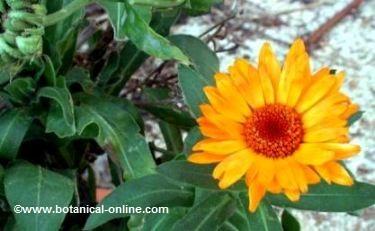
(Calendula officinalis)
Digestive properties of calendula
Calendula choleretic effect stimulates the flow of bile into the digestive tract and, thus, improves the digestion process.
It can be taken in case of slow digestion, and also for cramps, due to its antispasmodic properties. (Take 1g. 200g dried flower on. Infusion, after meals).
Antibiotic properties of pot marigold
Calendula officinalis has antibacterial, antifungal and antiviral components. An organic extract of calendula is used to treat the AIDS virus (HIV-1). A skin lotion is recommended to treat herpes simplex virus.
EXTERNAL PREPARATIONS WITH CALENDULA LEAVES
Calendula officinalis, a very good vulnerary
Marigold is one of the most reputed vulnerary remedies historically. It contains calendulosides and flavonoids, which reduce inflammation, disinfect and shorten the healing time of wounds. Calendula helps relieve pain because of its analgesic effect, so it is used in a similar but less powerful way than the arnica.
A good remedy for scars, bruises and shock: Crushed leaves and flowers are applied on shock and inflammation, and compresses with flowers on scars and wounds. This treatment also helps heal skin blisters.
Because of its antibiotic properties, the crushed leaves are also applied in poultice for skin infections, for diaper rash, warts and acne.
Being analgesic, it helps relieve symptoms of itching and rashes, burns and urticaria (Apply a compress on the affected area).
Other curative properties of calendula
- Skin hardness: poultices with crushed leaves and marigold flowers are applied on corns. It has mucilages and components that soften and smooth corns or other hardened skin parts (Apply a poultice of crushed leaves and flowers 34 times a day on the tough area).
- Conjunctivitis: calendula compresses are applied on puffy eyes, swollen eyelids and styes. They have antiinflammatory and antiseptic properties, so they are also used for conjunctivitis.
- Skin Care: The plant contains mucilage, antioxidants and flavonoids that soothe the skin and take care of it. Because of its salicylic acid content, when applied topically, it is a remedy to prevent pimples and acne, as it opens the pores and fights harmful bacteria living in the skin.
- Calendula lotions are antibiotic and antiinflammatory and may be used to treat skin diseases, such as atopic dermatitis, psoriasis or dandruff. Salicylic acid is also effective in treating dry skin, stretch marks in pregnancy, skin spots or blotches on the face. (Apply a compress or poultice of crushed leaves and flowers).
- Muscle atrophy: calendula has salicylic acid, saponins and terpenoids with an analgesic effect, which may help treat muscle atrophy and multiple sclerosis. (Apply calendula essence of the area).
 Calendula dosage
Calendula dosage
INTERNAL TREATMENT
- Infusion of dry flowers: 1 4g. per cup of boiling water. Let stand 15 minutes and strain. Take 2 cups a day after meal. Menstrual flow adjusting treatment is started one week before it takes place. It has a mild diuretic effect. (More information)
- Cooking: 30g. in 1 liter of water
- Tincture: soak 20g. flowers in 100g. of alcohol 60 ° for 1 week. Take 2030 drops 23 times daily.
EXTERNAL TREATMENT
- Poultice: leaves and fresh flowers, applied crushed to bruises.
- Compress: decoction 67% of leaves and flowers.
- Eye baths: decoction of petals 2 teaspoons per half liter of water. Apply warm compresses to the eye to treat conjunctivitis or compress to reduce swelling of eyelids.
![]() More information on calendula.
More information on calendula.

 Calendula dosage
Calendula dosage